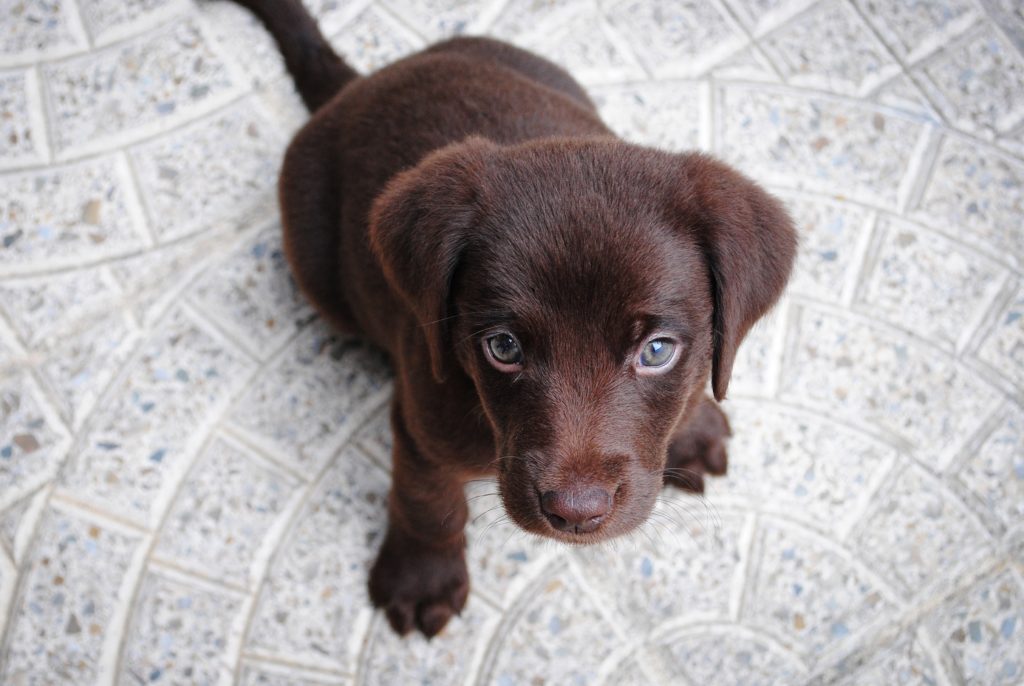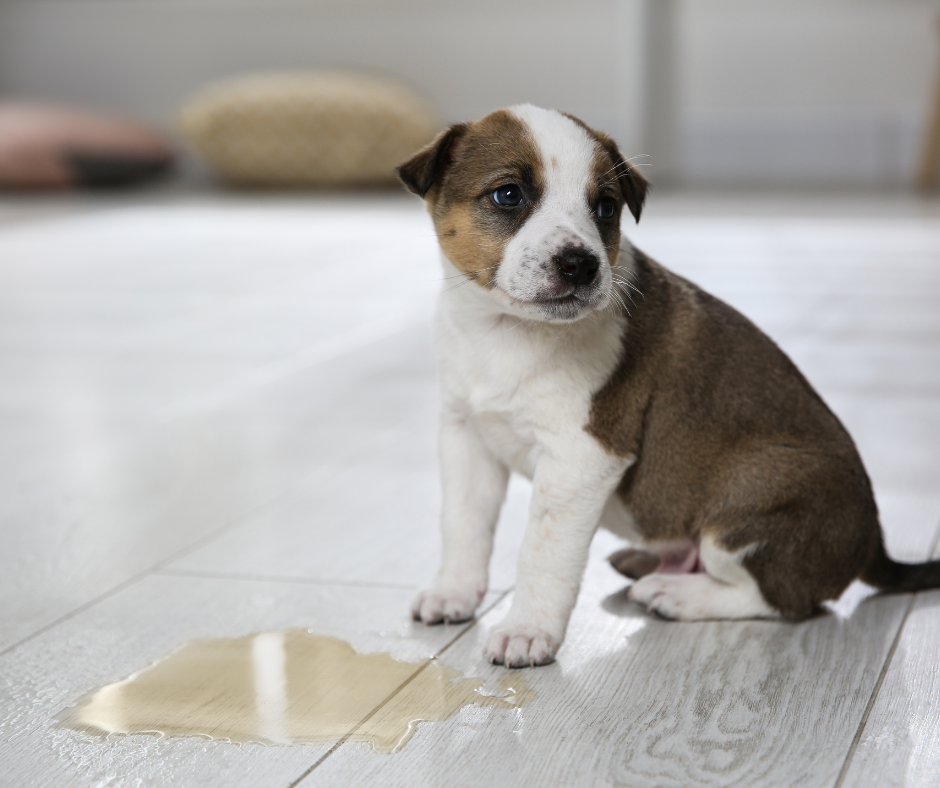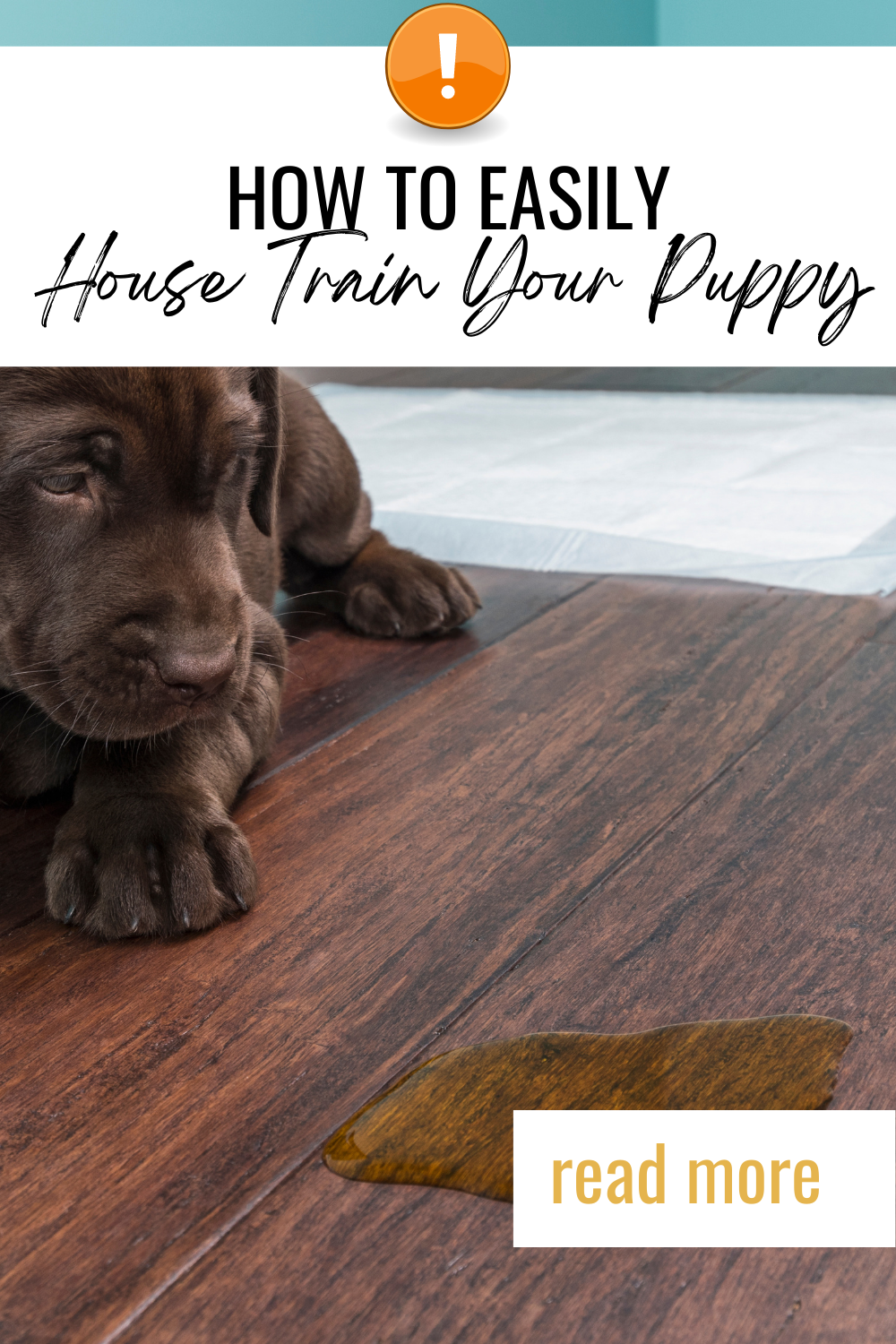If you recently brought a puppy home (or you’re doing some research before they arrive), congratulations! I don’t think there’s anything more adorable than a puppy! As cute as they are, it’s important to remember that house training your puppy will take time, commitment, and consistency.
Start potty training your puppy the first day you bring them home. Prevention truly is best when it comes to house training! It’s easier to teach them that going to the bathroom outside is the right choice than it is to break the habit of going bathroom inside. With the right plan, potty training your puppy isn’t complicated!
In this post we’ll cover:
- How to create a puppy potting training schedule based on age and activities
- How to teach your puppy to potty outside
- Preventing your puppy from having accidents indoors
- What to do if you puppy has an accident in the house
How to create a puppy potty training schedule:
A basic rule of thumb is that puppies can hold their bladders for one hour for every month of age.
This means if you have a 2 month old puppy, their max is probably around 2 hours between bathroom breaks. Don’t go longer than this or you risk accidents and set backs in their potty training!
There are also key moments that you should likely take a young puppy for a bathroom break. These include:
- After eating or drinking
- After chewing a bone or toy
- After naps or being in their crate
- After playing
- First thing in the morning
- Last thing at night
Potty training can feel overwhelming at first because you’re going to be taking them for bathroom breaks a dozen or more times a day! It’s important to remember that you’re teaching your puppy that there’s approved places to go to the bathroom, and that the list does not include the house. Puppies physically cannot hold their bladders long, so it’s up to you to provide adequate outside trips. The more precise you are with potty training the faster your puppy will learn, and the sooner you can leave the tiring potty training days behind you!
If you’re going to be at work/unable to let your puppy outside make sure you as a trusted neighbour, family member, friend or dog walker to help keep your puppy on their schedule!
How to teach your puppy to potty outside:
Puppies aren’t born understanding that grass is ok to pee on, but carpet isn’t. We need to teach them!
Whenever possible, I suggest taking your puppy to a similar grassy spot for all bathroom breaks. It’s best if the location isn’t busy or noisy to prevent distraction (who can pee with this much commotion?!?). It’s also best to keep your puppy on leash until they do their business so they cannot wander or get distracted.
Pick a term that everyone in your family will use to communicate that it’s bathroom time. Many people say “Go potty!”, but pick anything you’ll remember to use. Mark the moment (read this article if you don’t know how to use a marker word) they finish peeing/pooping so that they begin to learn going to the bathroom outside is a wanted behavior!
Many dog owners make the mistake of praising/rewarding their puppy once they’re back inside rather than right after they finish. This won’t work! Dogs only associate praise (or punishment!) with something they did within the last few seconds. It’s important to praise them right when they finish peeing during the house training process. Don’t worry; this won’t last forever!

Preventing your puppy from having accidents indoors:
A key part of potty training your puppy is management. You want to make sure they don’t have opportunities to have many accidents indoors!
There are two ways I suggest preventing accidents:
- Crate training your puppy for times you cannot monitor them (such as when you’re at work)
- Leashing your puppy to you or nearby furniture at other moments so they cannot have accidents in private. Hands-free dog leashes such as this 6-8 ft one work beautifully.
Using a crate:
Many people are hesitant to crate their puppy, but it truly is one of the best tools for house training your puppy.
When introduced properly, crates are a place your puppy will WANT to go. Make sure you spend the time teaching your puppy to voluntarily enter the crate so that it becomes their very own safe, private den. Never use the crate for punishment!
Crates work great for potty training because puppies do not like going to the bathroom where they eat or sleep. For that reason, it’s vital that you get a proper sized crate. Your puppy should be able to comfortably lie down, stand up, and turn around without much excess space. If the crate is too small they won’t be comfortable, and if it’s too large they’ll be able to bathroom in a corner without it bothering them.
Keeping your puppy in your sights:
It’s important to keep your puppy close by when they’re out of their crate. You don’t want to give your puppy access to having accidents undetected!
I suggest using a 6-8 ft hands-free leash with your puppy. This gives them some freedom while maintaining your ability to keep an eye on them.
Watch out for tells that your puppy may have an accident. These could include: whining, squatting, restlessness, intense sniffing, or circling. If you think your puppy is going to have an accident, take them outside to their bathroom spot immediately! Prevention is best with potty training.
What if your puppy has an accident in the house?
If your puppy has an accident in the house, take it as a lesson. Did you try going too long between potty breaks, ignore signs they had to go, or not supervise them enough?
Accidents are going to happen! It’s part of the house training process. Learn from it and move on!
- If you catch your puppy messing in the house mid-accident, make a sound such as “Ah!”, pick them up, and immediately take them for a potty break outside. Be sure to praise them if they go!
- Never punish your puppy for an accident you find in the house. Dogs have a few second learning ability, so ludicrous sugggestions such as rubbing your dogs nose in their excrement DO NOT WORK! All your puppy will learn is to be scared of you. It’s our responsibility as dog owners to make sure we teach our dogs what behaviors we want rather than punishing “bad” ones. This includes keeping eyes on your puppy when they’re free and taking them outside frequently enough.
- Clean the accident up without fuss, and make sure you use cleaner that neutralizes the odours! If soiled scent remains the puppy will be more likely to use that spot as a toilet again in the future.
Remain consistent and patient while potty training your puppy!
Puppies are amazing, but they’re also a time-consuming commitment (they’re worth the effort!).
House training your puppy won’t happen overnight, but with consistent effort your puppy will learn that outside is the perfect bathroom spot!
Happy training 🙂
Disclosure: Happy Hounds uses affiliate links. Purchasing with these links will not cost you any extra, but I get commissions for purchases made through these links. Affiliate links help me to continue to offer free resources & blog posts. I would love if you used them!


+ show Comments
- Hide Comments
add a comment